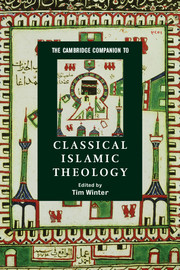1 - Qur’an and hadith
from Part I: - Historical perspectives
Published online by Cambridge University Press: 28 June 2008
Summary
THE QUR’AN
The Qur'an is the starting-point of Islamic theology, and indeed of all things Islamic. As technically defined by Islamic theology and law, it is “the corpus of Arabic utterances sent down by God to Muhammad, conveyed in a way that categorically establishes its authenticity”.
For the tradition, this classical definition summarises the basic characteristics of the Qur'an and distinguishes it from anything else the Prophet said. The key phrase is “sent down by God”, for God speaks directly in the Qur'an, and Muhammad is seen as a passive recipient to whom the Book was simply “sent down”; however, it is the last element of the definition which is most significant in considering the historical basis for Islamic beliefs.
According to the Muslim historians, the first revelation consisted of two lines in Arabic: in the year 610, Muhammad was engaged in a spiritual retreat in a cave outside Mecca when he was approached by an angel who said to him: “Read!” He replied that he could not read, but the angel repeated the command, and received the same response; the third time, the angel recited to him the words: “Read, in the name of your Lord, who created” (96:1-6). This revelatory experience was soon followed by another, when a second short passage was delivered; and between that time and shortly before the Prophet's death at the age of sixty-three years, the entire text of the Muslim scripture gradually appeared. New revelations appeared in order to supply new teaching, commenting on events or answering questions according to circumstance.
- Type
- Chapter
- Information
- The Cambridge Companion to Classical Islamic Theology , pp. 19 - 32Publisher: Cambridge University PressPrint publication year: 2008
- 4
- Cited by

